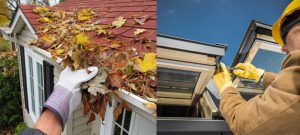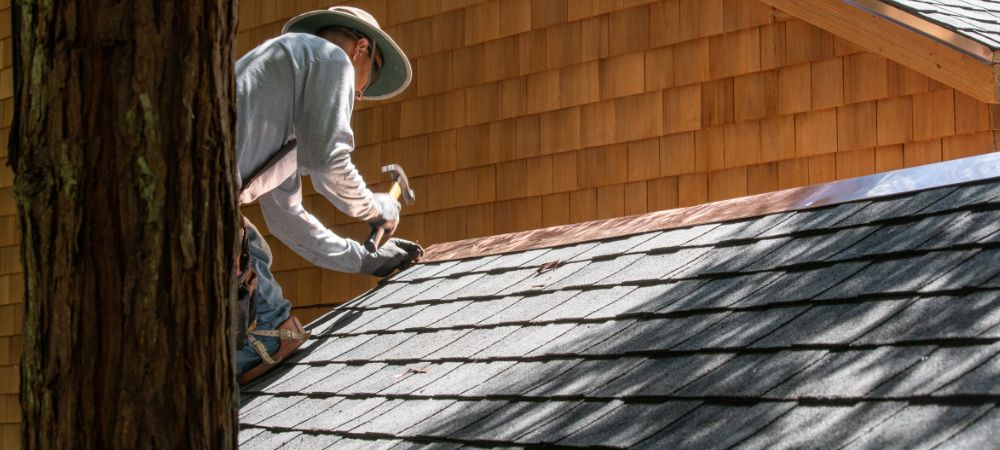
Your roof is your home’s first line of defense against the elements, yet it often goes unnoticed until something goes wrong. Ignoring signs of roof maintenance or wear can lead to costly repairs or even full replacements down the line. The good news? Many common roofing issues can be spotted early with a little know-how.
From water leaks to missing shingles, recognizing the warning signs of a roof in need of maintenance can save you time, money, and stress. In this guide, we look at 10 key indicators that your roof requires attention, helping you keep your home safe, energy-efficient, and free from unexpected repair bills. Whether it’s sagging areas, growing moss, or granules in your gutters, this list will empower you to take action before small problems turn into major headaches.
1. Visible Leaks or Water Stains Inside the Home
Water stains on your ceiling or walls are clear indicators of a roof leak. These discolorations often appear as brown or yellow patches and can expand over time if roof maintenance is ignored.
Check your attic for signs of water intrusion, such as damp insulation or wet rafters. A leak in your roof can lead to moisture accumulation in the attic space, potentially causing structural damage and mold growth.
Inspect your roof shingles for any visible damage or missing pieces. Compromised shingles can allow water to penetrate your roof’s protective barrier, leading to leaks inside your home.
Be aware that leaks may not always correspond directly to the location of water stains. Water can travel along roof planes or framing before dripping onto your ceiling, making it crucial to conduct a thorough inspection.
2. Missing, Cracked, or Curling Shingles
Inspect your roof regularly for missing, cracked, or curling shingles, especially after severe storms. These damaged shingles compromise your roof’s ability to protect against water infiltration and can lead to leaks.
Pay close attention to shingles around chimneys and other roof penetrations, as these areas are prone to damage. Ensure the flashing around these features is intact to prevent water from seeping into your home.
Curling shingles often indicate age-related deterioration or poor attic ventilation. They can allow wind-driven rain to penetrate your roof, potentially causing extensive damage over time.
In colder climates, damaged shingles can contribute to ice dam formation. Without proper protection, melting snow can refreeze at your roof’s edge, forcing water beneath the shingles and into your home.
3. Granules in Gutters or Downspouts
Check your gutters and downspouts as part of roof maintenance for an accumulation of granules, which are the sandpaper-like particles that coat asphalt shingles. Excessive granule loss indicates shingle deterioration and compromises your roof’s ability to protect against water and UV damage.
While some granule loss is normal, especially with new roofs, consistent or heavy shedding suggests your shingles are nearing the end of their lifespan. This issue can affect your roof’s drainage system and may lead to insurance claims if left unaddressed.
If you have a metal roof, look for signs of coating wear or rust in your gutters. Unlike asphalt shingles, metal roofs don’t shed granules but can experience other forms of deterioration that impact their performance.
Ensure trees near your roof are trimmed to prevent excessive debris from clogging your gutters and damaging your shingles. Proper maintenance of your roof and surrounding vegetation can significantly extend the life of your roofing system.
4. Sagging Roof Areas
Inspect your roof for any visible sagging or dips. These can indicate serious structural issues requiring immediate roof maintenance. Sagging often results from prolonged water damage, weakening roof decking and supporting structures.
Check your attic for signs of moisture, mold, or algae growth, which can contribute to roof sagging. Proper ventilation and regular cleaning of asphalt shingles can prevent these issues and extend your roof’s lifespan.
Pay attention to areas where snow tends to accumulate, as excess weight can cause roof sagging. Ensure your roof’s drainage system is functioning properly to prevent water and ice buildup.
Consider hiring a professional roofing inspector if you notice any sagging, as addressing this issue promptly can prevent more extensive and costly repairs. Regular roof maintenance can help identify potential problems before they lead to structural damage.
5. Damaged Flashing Around Vents and Chimneys

Inspect the flashing around your roof vents and chimneys regularly for signs of damage or deterioration. Damaged flashing can allow water to penetrate your roof, leading to leaks and potential structural issues.
Check for loose or missing flashing materials, particularly after severe wind events. Proper installation and maintenance of flashing are crucial for protecting vulnerable areas of your roof from ice and water infiltration.
Consider upgrading to high-quality bitumen-based flashing materials for improved durability and longevity. These materials often come with extended warranties, providing added protection for your investment.
Schedule professional roof inspections annually to assess the condition of your flashing and overall roof health. Regular roof maintenance can help identify and address potential issues before they escalate, potentially saving you from costly repairs.
6. Moss, Mold, or Algae Growth
Inspect your roof for moss, mold, or algae growth, which can indicate moisture issues and potential damage. Pay attention to shaded areas or those with poor drainage, as they’re more susceptible to growth.
Address any growth promptly to prevent it from compromising your roof’s waterproofing capabilities. Regular cleaning and maintenance of your rain gutters can help prevent moisture accumulation that leads to organic growth.
Consider installing zinc or copper strips along your roof’s ridge to inhibit moss and algae growth. These metals release ions during rainfall that deter organic growth and can extend your roof’s lifespan.
After severe weather events, thoroughly inspect your roof for any new growth or damage. Prompt attention to these issues can prevent costly repairs and maintain your roof’s integrity against future weather challenges.
7. Increased Energy Bills
Monitor your energy bills for unexpected increases, as they may indicate roof damage allowing heat or cool air to escape. Poor insulation or ventilation due to roof issues can lead to higher energy consumption and costs.
Check your attic for signs of moisture or debris, which can compromise insulation and increase energy usage. Regular roof maintenance, including debris removal and pressure washing, can help maintain your roof’s energy efficiency. Inspect your roof for damaged or missing shingles that may be reducing its ability to reflect sunlight and regulate temperature. Addressing these issues promptly can improve your home’s energy performance and protect your investment.
Consider scheduling a professional energy audit to identify areas of heat loss or gain through your roof. This can help pinpoint specific roof maintenance needs and prevent further energy inefficiencies caused by roof-related issues such as corrosion or inadequate ventilation.
8. Damaged Roof Valleys
Inspect your roof valleys regularly for signs of damage or wear. These critical areas where roof slopes meet are prone to water accumulation, making them vulnerable to leaks that can affect your property’s health.
Check for missing or damaged shingles in the valleys, as they can compromise your roof’s ability to channel water effectively. Proper roof maintenance in these areas is essential for protecting your home’s plumbing and interior from water damage.
Look for signs of rust or corrosion in metal valley flashing, which can lead to leaks. Exposure to ultraviolet rays and weather elements can accelerate deterioration, making regular inspections crucial.
If you notice any issues with your roof valleys, consider consulting a roofing professional. They can provide expert advice and perform necessary repairs to ensure your roof’s longevity and performance.
9. Daylight Through Roof Boards
Inspect your attic for visible daylight coming through roof boards, indicating gaps or holes in your roofing system. These openings can allow rain and hail to penetrate, causing damage to your home’s interior and insulation.
Check for any misaligned or damaged roofing tiles that may be letting light through. Proper tile installation is crucial for maintaining your roof’s integrity and preventing water infiltration during rainstorms.
Examine the areas around skylights for any signs of light penetration, as these fixtures are common points of weakness in roofing systems. Ensure proper sealing and flashing around skylights to prevent leaks and maintain energy efficiency.
Consider hiring a professional roofing contractor to assess and repair any areas where light is visible through your roof boards. Prompt attention to these issues can prevent more extensive damage and costly repairs in the future.
10. Age of the Roof
Consider your roof’s age as a critical factor in determining roof maintenance needs. Most asphalt shingle roofs last 20-30 years, while other materials have different lifespans. Implement a regular maintenance program to extend your roof’s life and prevent costly roof repair costs.
As your roof approaches the end of its expected lifespan, increase the frequency of inspections. The National Roofing Contractors Association (NRCA) recommends bi-annual inspections for older roofs to catch potential issues early and minimize roof damage.
Keep detailed records of your roof’s installation date and any repairs or maintenance performed. This information helps you anticipate when a roof replacement might be necessary and budget accordingly.
Be proactive in addressing age-related wear and tear on your roof. Regular roof maintenance and timely repairs can significantly extend your roof’s lifespan, potentially delaying the need for a full replacement and saving you money in the long run.
Conclusion
Regular roof maintenance is crucial for protecting your home and preventing costly repairs. Homeowners can identify potential issues early and take prompt action by staying vigilant for signs like visible leaks, damaged shingles, sagging areas, and increased energy bills. Timely inspections and repairs extend your roof’s lifespan and safeguard your property’s structural integrity and energy efficiency. Proactive roof maintenance is an investment in your home’s longevity, safety, and value.
